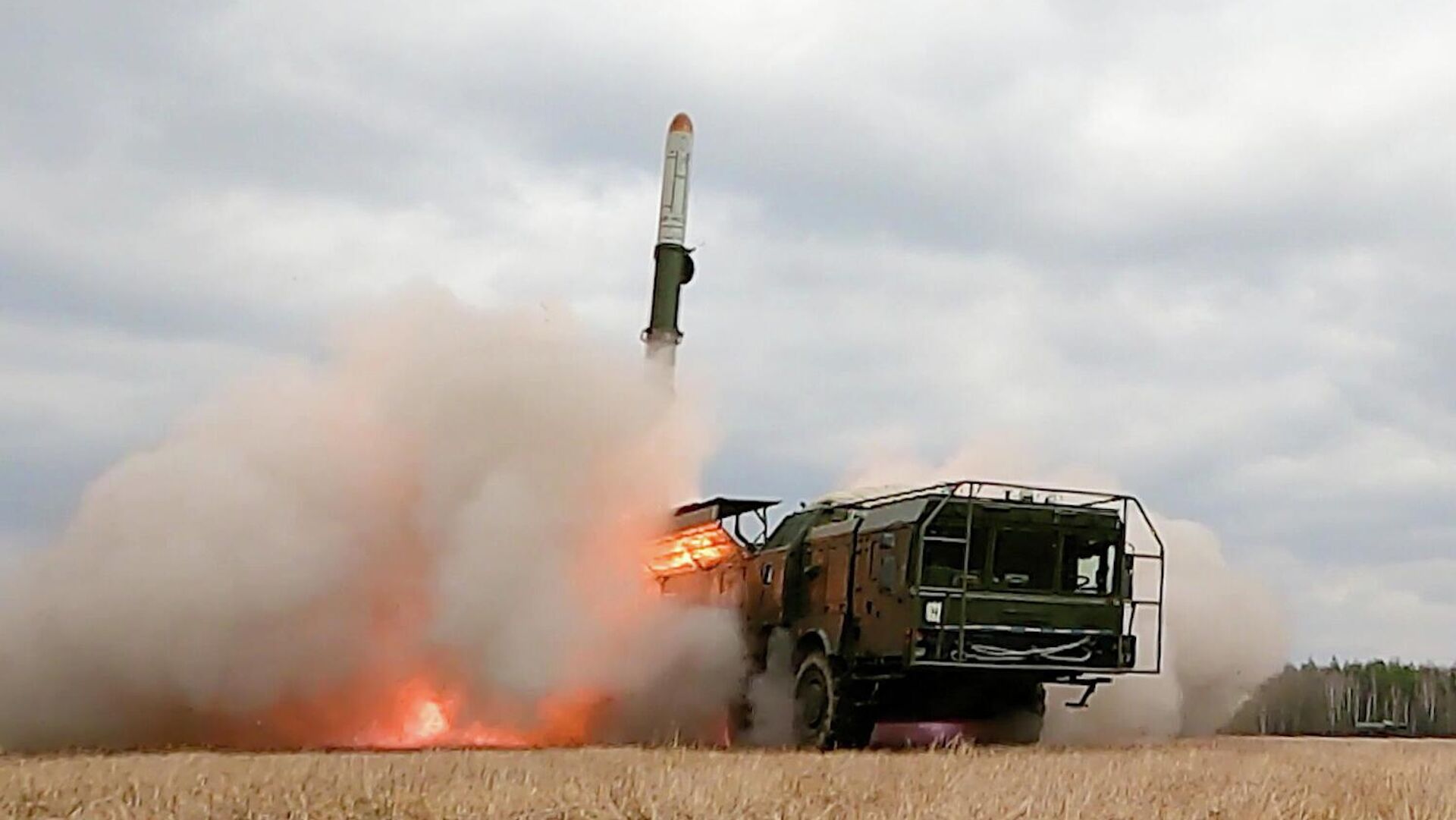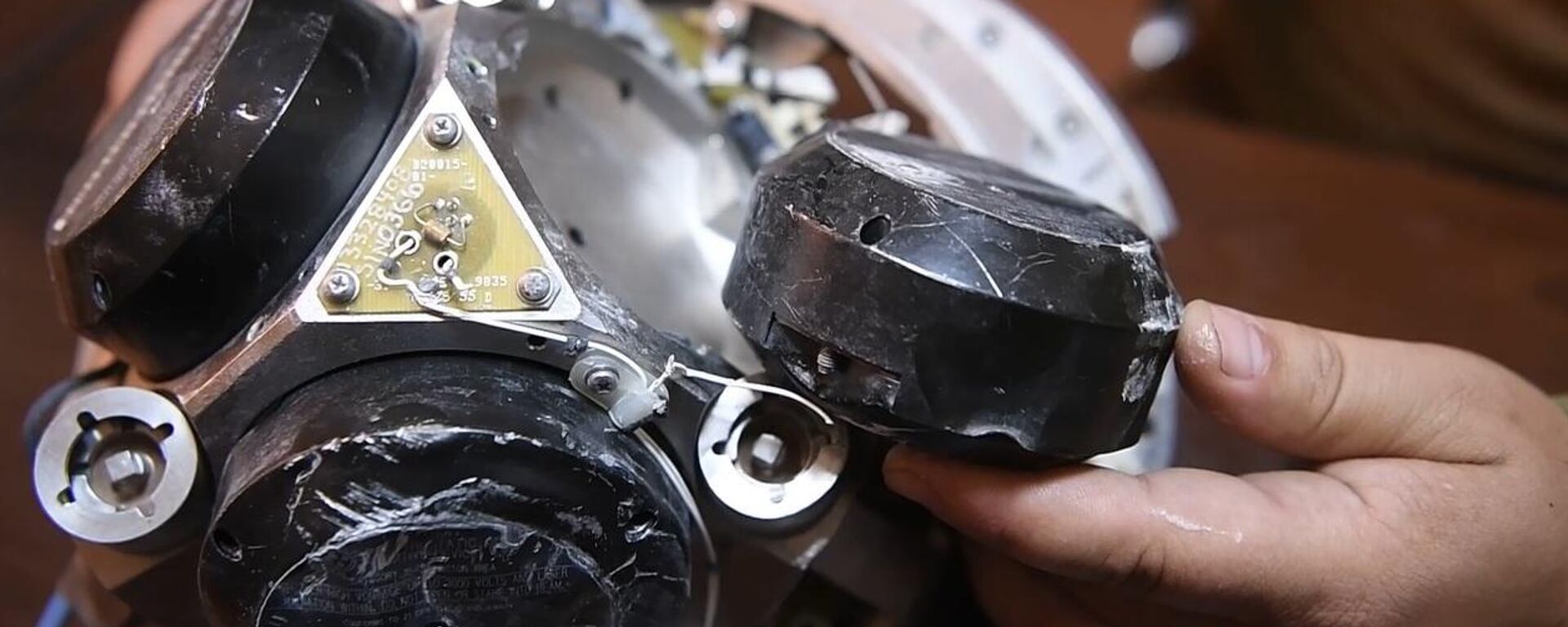https://sputnikglobe.com/20240705/no-technological-problems-here-russia-ready-to-match-us-in-intermediate-range-missile-race-1119254803.html
'No Technological Problems Here': Russia Ready to Match US in Intermediate-Range Missile Race
'No Technological Problems Here': Russia Ready to Match US in Intermediate-Range Missile Race
Sputnik International
The United States’ efforts to develop and deploy missile systems previously banned under the INF Treaty virtually left Russia no choice but to respond in kind, argues Dmitry Stefanovich, research fellow at the Moscow-based Institute of World Economy and International Relations with the Russian Academy of Sciences.
2024-07-05T15:12+0000
2024-07-05T15:12+0000
2024-07-05T15:18+0000
analysis
russia
inf treaty
missiles
kalibr
zircon hypersonic cruise missile
iskander ballistic missile
https://cdn1.img.sputnikglobe.com/img/07e6/05/04/1095255381_0:213:1496:1056_1920x0_80_0_0_73ad729725a0601f29d8034ad48c2486.jpg
The United States’ efforts to develop and deploy missile systems previously banned under the INF Treaty virtually left Russia no choice but to respond in kind, argues Dmitry Stefanovich, research fellow at the Moscow-based Institute of World Economy and International Relations with the Russian Academy of Sciences.Russia’s hand was forced in this matter, Stefanovich says, noting that a veritable small- and intermediate-range missile race is now taking place in the world, and Russia and the United States are not the only participants.According to Stefanovich, new Russian land-based missile systems may include the ground-launched versions of Kalibr cruise missile and Zircon hypersonic cruise missile, as well as (possibly) new Iskander ballistic missiles with a longer range.He also recalls that Russia has been working on Rubezh, a “light intercontinental ballistic missile” that could possibly be turned into a short- or intermediate-range missile.Unlike the air- and sea-based missile systems, ground-based missile launchers are cheaper to maintain to deploy and harder to detect as they are being moved around Russia’s vast territory. As for the regions where they could be deployed, Stefanovich suggests that it may be either the Far East – closer to where similar US missile systems showed up recently – or the Leningrad Military District that was created in response to NATO’s encroachment on Russia’s western borders.
https://sputnikglobe.com/20240705/exclusive-russian-specialists-studied-concept-of-operation-of-atacms-cluster-submunition-1119249010.html
russia
Sputnik International
feedback@sputniknews.com
+74956456601
MIA „Rossiya Segodnya“
2024
News
en_EN
Sputnik International
feedback@sputniknews.com
+74956456601
MIA „Rossiya Segodnya“
Sputnik International
feedback@sputniknews.com
+74956456601
MIA „Rossiya Segodnya“
russia intermediate range missiles, russia missiles development, russia missiles production
russia intermediate range missiles, russia missiles development, russia missiles production
'No Technological Problems Here': Russia Ready to Match US in Intermediate-Range Missile Race
15:12 GMT 05.07.2024 (Updated: 15:18 GMT 05.07.2024) Russia is entitled to design and manufacture intermediate-range nuclear-capable missiles in response to the US withdrawing from the Intermediate-Range Nuclear Forces Treaty and developing such weapons, Russian President Vladimir Putin said at a press conference held after the Shanghai Cooperation Organization summit this week.
The United States’ efforts to develop and deploy missile systems
previously banned under the INF Treaty virtually left Russia no choice but to respond in kind, argues
Dmitry Stefanovich, research fellow at the Moscow-based Institute of World Economy and International Relations with the Russian Academy of Sciences.
Russia’s hand was forced in this matter, Stefanovich says, noting that a veritable small- and intermediate-range missile race is now taking place in the world, and Russia and the United States are not the only participants.
“We have been watching the US’ actions all this time. Perhaps it was due to self-restraint or perhaps there were, shall we say, more important matters at the time,” he said, adding that the demonstration and deployment of new Russian missile systems may soon follow.
According to Stefanovich, new Russian land-based missile systems may include the ground-launched versions of Kalibr cruise missile and Zircon hypersonic cruise missile, as well as (possibly) new
Iskander ballistic missiles with a longer range.
He also recalls that Russia has been working on Rubezh, a “light intercontinental ballistic missile” that could possibly be turned into a short- or intermediate-range missile.
“There are no technological problems here,” Stefanovich remarks.
Unlike the air- and sea-based missile systems, ground-based missile launchers are cheaper to maintain to deploy and harder to detect as they are being moved around Russia’s vast territory.
As for the regions where they could be deployed, Stefanovich suggests that it may be either the Far East – closer to where similar US missile systems showed up recently – or the Leningrad Military District that was created in response to NATO’s encroachment on Russia’s western borders.



